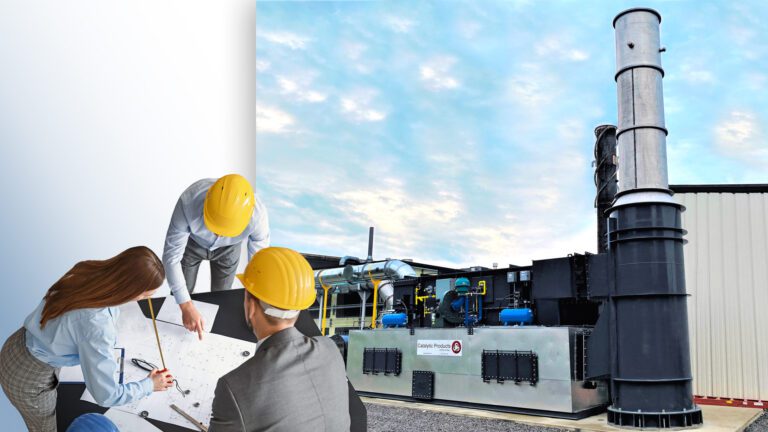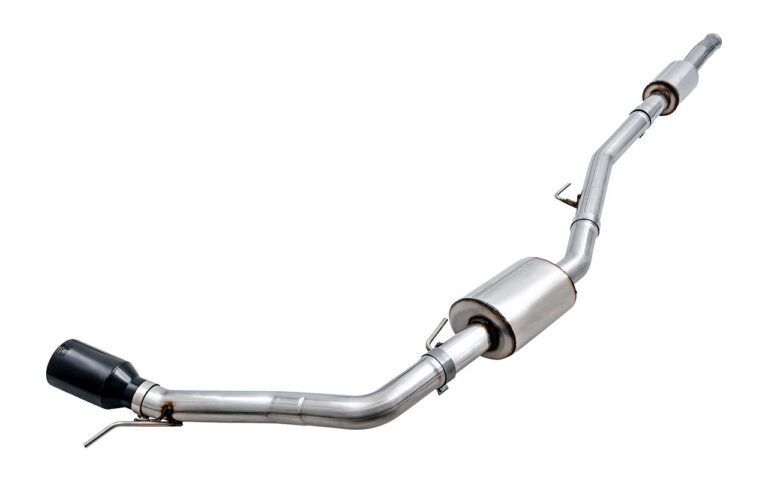Inside of Muffler : Unlocking the Secrets of Performance
The inside of a muffler is designed to suppress noise and reduce exhaust emissions in vehicles. The muffler contains chambers and baffles that help to reduce the loud sounds produced by the engine.
Introducing an inside look at the inner workings of a muffler. This essential component of a vehicle plays a crucial role in minimizing noise and decreasing exhaust emissions. Through the use of chambers and baffles, the muffler effectively muffles the loud sounds that originate from the engine.
In doing so, it ensures a more peaceful and environmentally friendly driving experience.
Anatomy Of A Muffler
The muffler is an essential component of the exhaust system, designed to reduce noise and control emissions. It is made up of several components that work together to perform these functions.
The main body of the muffler is constructed using a durable material, such as steel or stainless steel, to withstand high temperatures and harsh conditions. It is often shaped like a cylindrical tube, with multiple chambers inside.
Inside the muffler, you’ll find a series of perforated tubes and baffles. These tubes and baffles are strategically placed to create turbulence in the exhaust flow, which helps in reducing noise. The sound-absorbing materials, such as fiberglass or rock wool, are wrapped around these components to further dampen the sound waves.
| Exhaust system components | Muffler construction and design | Sound-absorbing materials used |
|---|---|---|
| Exhaust pipe | Main body made of steel or stainless steel | Fiberglass or rock wool |
| Catalytic converter | Perforated tubes and baffles | |
| Resonator | ||
| Tailpipe |
Overall, the muffler plays a crucial role in reducing noise produced by the engine’s exhaust gases, and its construction and design, along with the use of sound-absorbing materials, contribute to a quieter and more environmentally friendly driving experience.
How Mufflers Affect Performance
Mufflers play a crucial role in both performance and noise reduction. One of the key factors affecting engine performance is backpressure. When exhaust gases are released from the engine, they encounter resistance in the muffler, which creates backpressure. Backpressure can either enhance or hinder engine performance, depending on the design of the muffler. High-performance mufflers are engineered to minimize backpressure, allowing the engine to breathe more freely and resulting in improved power output. Noise pollution is another important consideration when it comes to mufflers. Mufflers help to reduce the noise generated by the combustion process, making vehicles quieter and more comfortable for passengers and bystanders. However, balancing performance and noise reduction can be a challenge. Engineers strive to design mufflers that strike the right balance between reducing noise and maintaining optimum engine performance. By carefully considering exhaust flow dynamics and utilizing innovative technologies, muffler manufacturers continue to improve performance while minimizing noise pollution.
Different Types Of Mufflers
There are different types of mufflers, each with its own unique design and internal components. One type is the Chambered muffler, which features internal chambers that help to reduce noise and improve exhaust flow. These chambers create a series of reflection points for the exhaust gases, which helps to cancel out certain frequencies and reduce overall noise levels. Another type is the Glasspack muffler, which has a straight-through design. This design allows for maximum flow and minimal restriction, resulting in a louder and more aggressive exhaust note. Lastly, there are Baffled mufflers, which utilize a baffle plate system inside. The baffle plates help to break up and redirect the exhaust gases, which can reduce noise and create a more refined exhaust sound. Each type of muffler offers its own benefits and characteristics, so choosing the right one for your vehicle depends on personal preference and desired sound output.
Innovative Technology Within Mufflers
Mufflers have come a long way in terms of technology and design. One of the innovative techniques used in mufflers is the Venturi effect, which enhances airflow efficiency. This effect is achieved by carefully shaping the interior of the muffler to create a narrowing passage that speeds up the exhaust gases, resulting in improved performance. Reflective sound-canceling technology is another advancement in muffler design. This technology employs multiple chambers and baffles to redirect and cancel out the sound waves generated by the engine. By doing so, it reduces the noise produced by the exhaust system without compromising on the performance of the vehicle. Turbo-style mufflers have also made a significant impact on performance. Inspired by turbochargers, these mufflers feature a unique design that creates a scavenging effect, which helps in extracting exhaust gases more efficiently. As a result, it improves the overall engine performance, aiding in increased horsepower and torque. Overall, these technological advancements in mufflers not only enhance the efficiency of airflow but also contribute to a quieter and more powerful driving experience.
Customizing Your Muffler For Performance Gains
htmlChoosing The Right Muffler For Your Vehicle Type
When customizing your muffler for performance gains, it is crucial to choose the right muffler that suits your vehicle type. Different vehicles have different exhaust system requirements, so it is important to consider factors such as vehicle engine size, power output, and overall performance goals. Selecting a muffler that matches your vehicle type will ensure optimal performance and enhanced engine sound.
Installing Performance-oriented Muffler Systems
Installing a performance-oriented muffler system can significantly improve your vehicle’s power and overall performance. These systems are designed to reduce backpressure in the exhaust system, allowing the engine to breathe more efficiently. They also feature advanced muffler designs that enhance exhaust flow and reduce restrictions. By replacing your stock muffler with a performance-oriented one, you can experience increased horsepower and torque, improved throttle response, and a deeper, more aggressive exhaust note.
Tuning The Exhaust System For Optimum Results
In addition to choosing the right muffler and installing a performance-oriented system, tuning the exhaust system is essential for achieving optimum results. Proper tuning involves adjusting the exhaust backpressure, optimizing pipe diameter, and calibrating the engine’s air-to-fuel ratio. This ensures that the exhaust gases flow smoothly and efficiently, improving overall engine performance. Consulting with an expert tuner or mechanic who specializes in exhaust system tuning is recommended to achieve the best results.

Credit: www.corsaperformance.com
Frequently Asked Questions Of Inside Of Muffler
What Is Inside A Muffler?
A muffler is a component in a vehicle’s exhaust system that reduces noise produced by the engine. Inside a muffler, you’ll find baffles and chambers designed to redirect and absorb sound waves, minimizing the volume that is emitted from the exhaust pipe.
Can I Drive With A Hole In My Muffler?
Yes, you can drive with a hole in your muffler, but it is not advisable. This can negatively affect your vehicle’s performance and may lead to louder noise and potential damage. Get it fixed as soon as possible to ensure a safe and optimal driving experience.
Does The Muffler Contain The Catalytic Converter?
The muffler does not contain the catalytic converter. They are separate components that serve different purposes in the exhaust system.
What Is The Hair Like Stuff Coming Out Of My Exhaust?
The hair-like stuff coming out of your exhaust is most likely asbestos, which should be immediately removed by a professional. Asbestos is harmful to your health and can cause serious respiratory problems. Get your vehicle checked and consult an expert to properly address this issue.
Conclusion
To summarize, exploring the inside of a muffler has shed light on its intricate design and components. Understanding the purpose and function of the resonator, baffles, and tubing has given us a deeper appreciation for how they work together to reduce noise and enhance engine performance.
By maintaining and occasionally inspecting the muffler, we can prolong its lifespan and ensure optimal functionality for our vehicles. Mufflers truly play a vital role in our daily commute, providing a quieter and more enjoyable driving experience.








